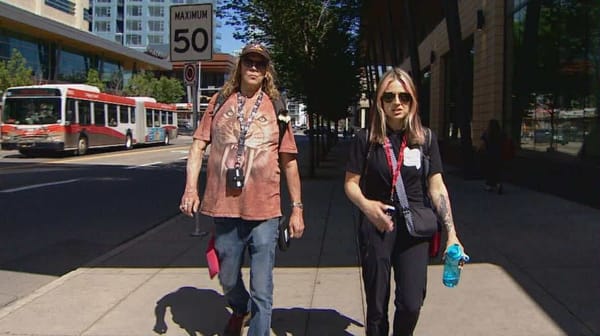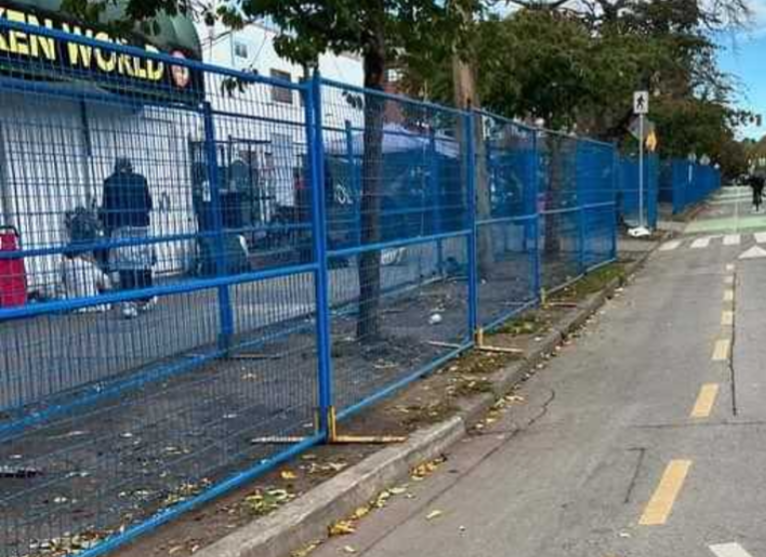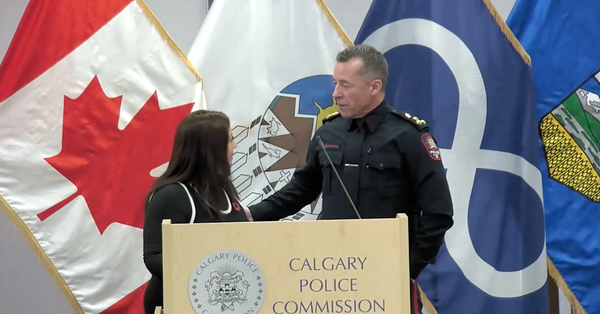Where opioid busts go, death follows
With the ten largest Canadian busts coinciding with surging deaths, we should reframe drug enforcement as police violence.
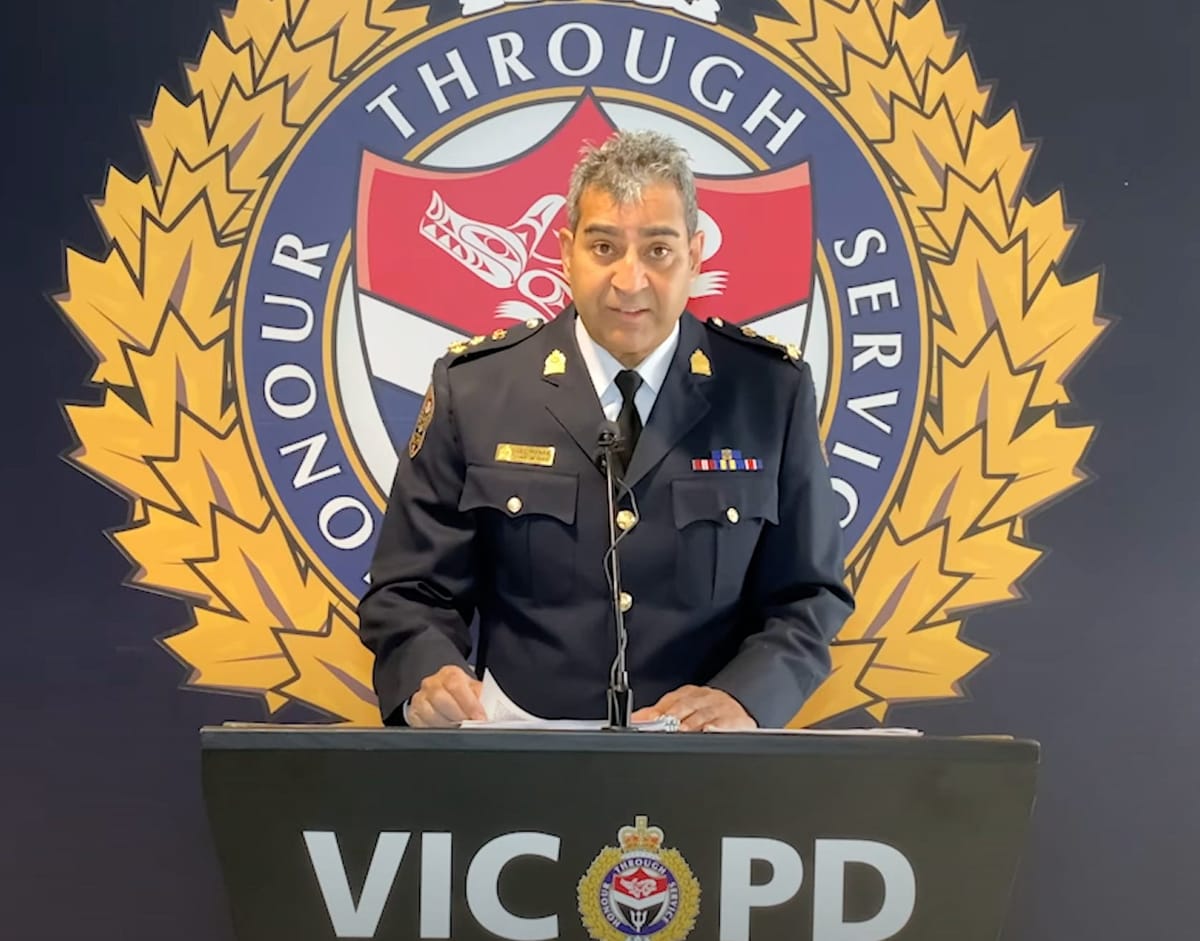
It might be the most important study in recent drug policy memory: within 500 metres of an opioid bust, fatal drug poisonings double in the week that follows.

This means we now have measurable evidence that police enforcement of drug trafficking and possession kills people. Yet, while policy discussions such as BC’s decriminalization emphasize compassion for people in possession of opioids, those responsible for trafficking continue to be vilified. But trafficking enforcement also puts end users at risk by disrupting trusted supply networks and forcing people to seek out supply of lesser-known strength and composition.
We don’t yet know what this study says at greater geographical scales: if we know a neighbourhood bust harms buyers as they scramble to backfill with whatever’s available, what does that mean for large-scale busts that shortchange hundreds of thousands of buyers?
Regardless, here’s what we can say: the three provinces with the most drug toxicity deaths have recorded the top ten fentanyl and carfentanil busts in Canada since 2016. Does this mean Alberta, Ontario and BC enforce opioid trafficking laws more aggressively, to the detriment of drug supply stability?

Like most issues of policing, we don’t get that type of transparency. But instead of celebrating drug busts, we know enough to reframe them as acts of violence toward people who use drugs. So, like the busts peacocked by police for the news cameras, let’s spread Canada’s deadliest opioid busts out on the table with the police forces responsible for them. Each section will describe a single bust, and each section header is a quote from the police who made the bust.
Note that most of the quantities reported in these stories are based on an assumption of pure product from media and police reports, so true quantities may vary from these. If you know of any big opioid bust to add, let me know in the comments! I’ll be maintaining a database of all busts with over 1 kg fentanyl or carfentanil seized, but expanding on this story should include heroin and other opioids which help keep people safer.
10. “Our communities are safer because of this drug seizure”
On December 5, 2022, Saskatchewan RCMP made an arrest along Whyte Ave in Edmonton of a man carrying 10 kg of fentanyl in his car.
Assuming the average user consumes 1g street fentanyl at 15% purity, disrupting 10 kg in the supply means that for a full month, suppliers would be forced to backfill the shortage with adulterants like carfentanil, benzodiazepines, xylazine, rat poison, and so on for over 2,000 people.
Your guess is as good as mine: maybe it affects 200 people for ten months or 200,000 people for 3 days. Regardless, there’s no indication that supply contamination affects demand, unless you count the dead.
The supply is already so risky because it’s unregulated, but stripping this many people of their precious little informed consent for an extended period means countless preventable EMS dispatches, hospitalizations and deaths.
The Saskatchewan RCMP who made the arrest also provided a useful insight that might link the large number of drug busts in Alberta to the skyrocketing opioid-related deaths in neighbouring Saskatchewan:
“We seized over 10 kg of fentanyl which had the potential of reaching communities across Saskatchewan and Alberta”
9. “We will do everything we can to catch you … before you kill more people”
On December 16, 2020, a $30,000,000 seizure by VicPD and the Combined Forces Special Enforcement Unit of BC (CFSEU-BC) included 10 kg of fentanyl along with MDMA, meth, cash and weapons. So that’s another 2,000 people placed at risk for a month so a couple chiefs could have a moment before the camera.
8. “We’ll never know exactly how many lives were saved”
On December 19, 2019, Canada Border Services Agency (CBSA) and Royal Canadian Mounted Police (RCMP) announced a joint investigation of a fentanyl importer that removed 13.7 kg fentanyl and fentanyl analogues from circulation at the port in Richmond, BC.
This is equivalent to 1,370,000 street doses and works out to over 3,000 people being put in the dark on what they were consuming for a full month. This, with other large-scale busts in Alberta and Ontario, coincided with rapid rises in drug poisoning deaths in the three provinces that were not observed elsewhere in Canada at this time.
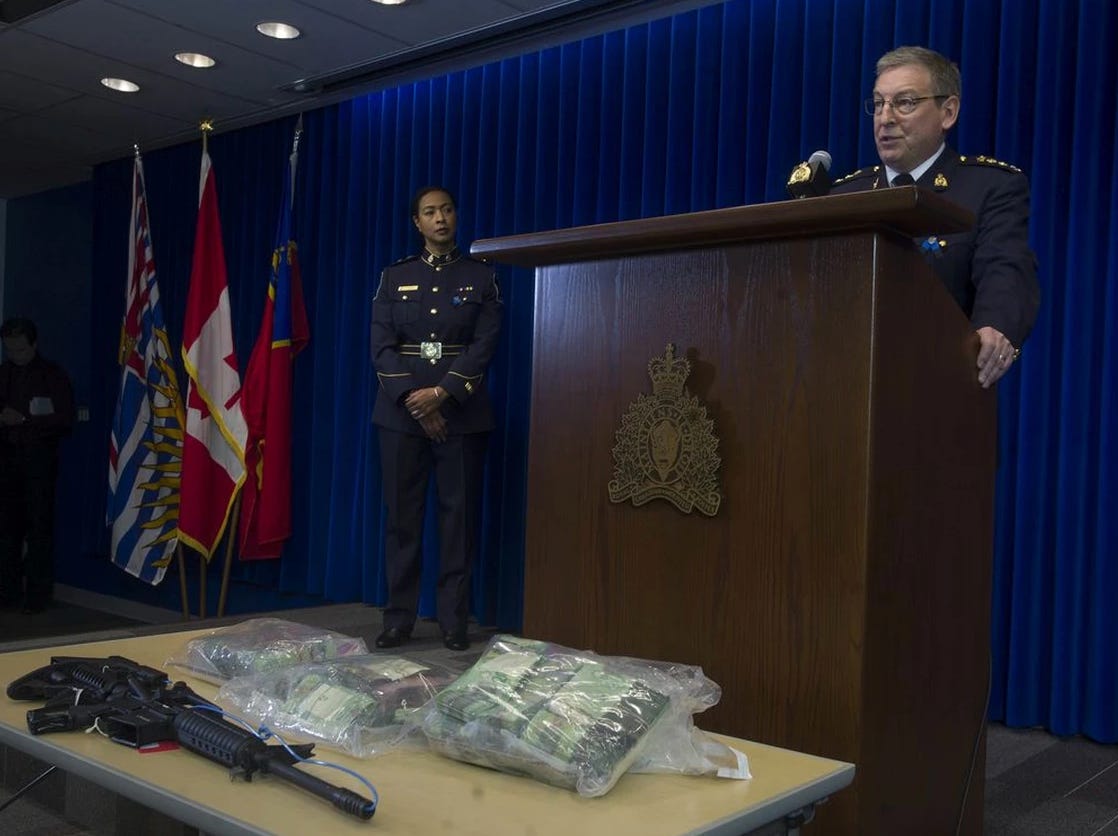
7. “We know we have saved lives”
Calm down, Edmonton Police. You probably killed people.
Removing approximately 130,000 pills or 14.2 kg of fentanyl from circulation is equivalent to forcing over 3,000 people already vulnerable to swings in quality from a relatively known supply to an unknown supply for a full month. But good work making the money look gigantic.

6. Durham Police ghosts its own story
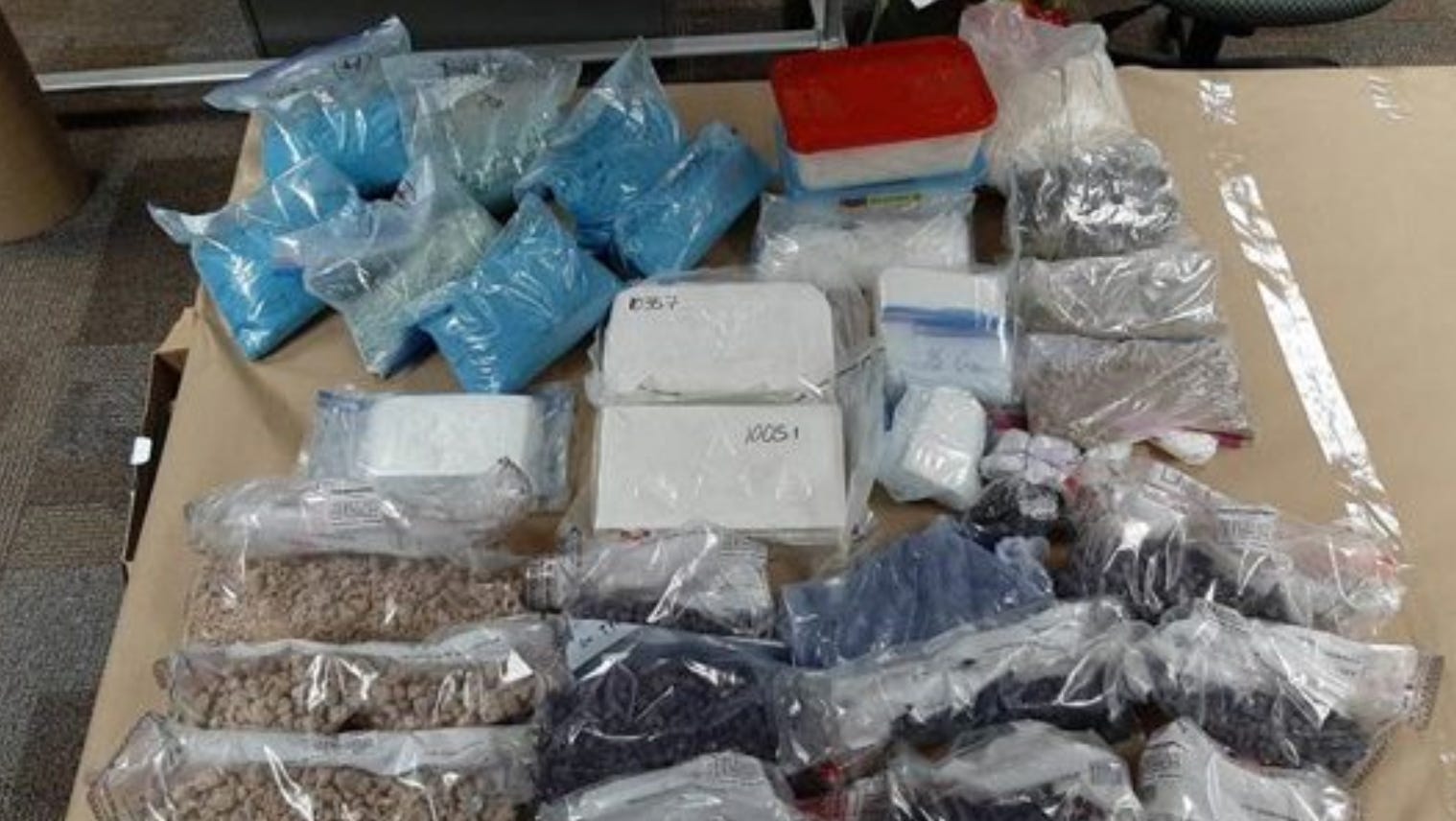
A man was charged by Durham Police on December 23, 2019 after a seizure of 14.5 kg fentanyl, but no follow-up stories or court proceedings seem to exist. I emailed Durham Police anyway to see if any prosecution ever came of this. I haven’t yet received a reply.
5. “A major win … that these drugs have been taken off the street”
February 2023 saw the largest drug bust in Sarnia’s history! That means the largest number of police-involved drug poisonings in the region might also be traced back to this moment.
Removing fifteen kilograms of fentanyl from the local supply is equivalent to forcing almost 3,500 to run a gauntlet of unknown drug potency and higher risk of death for an entire month. Well done, Sarnia Police Vice Unit!
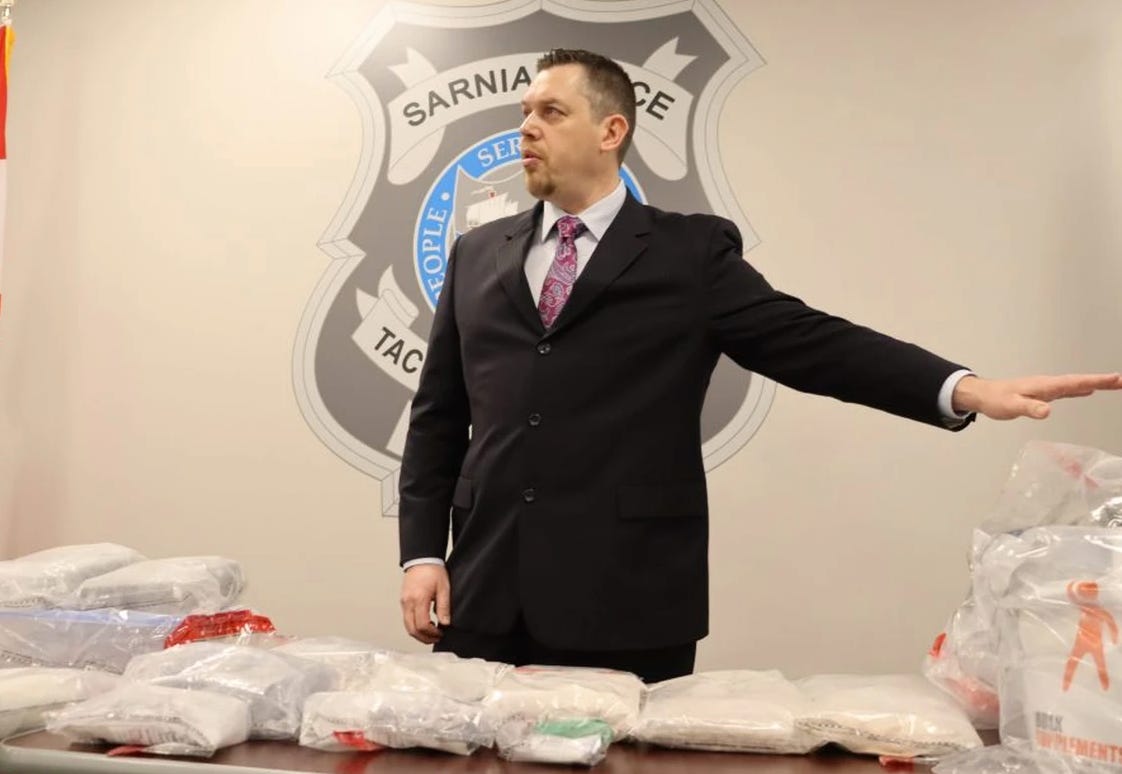
4. “Those involved were undoubtedly dealing in death”
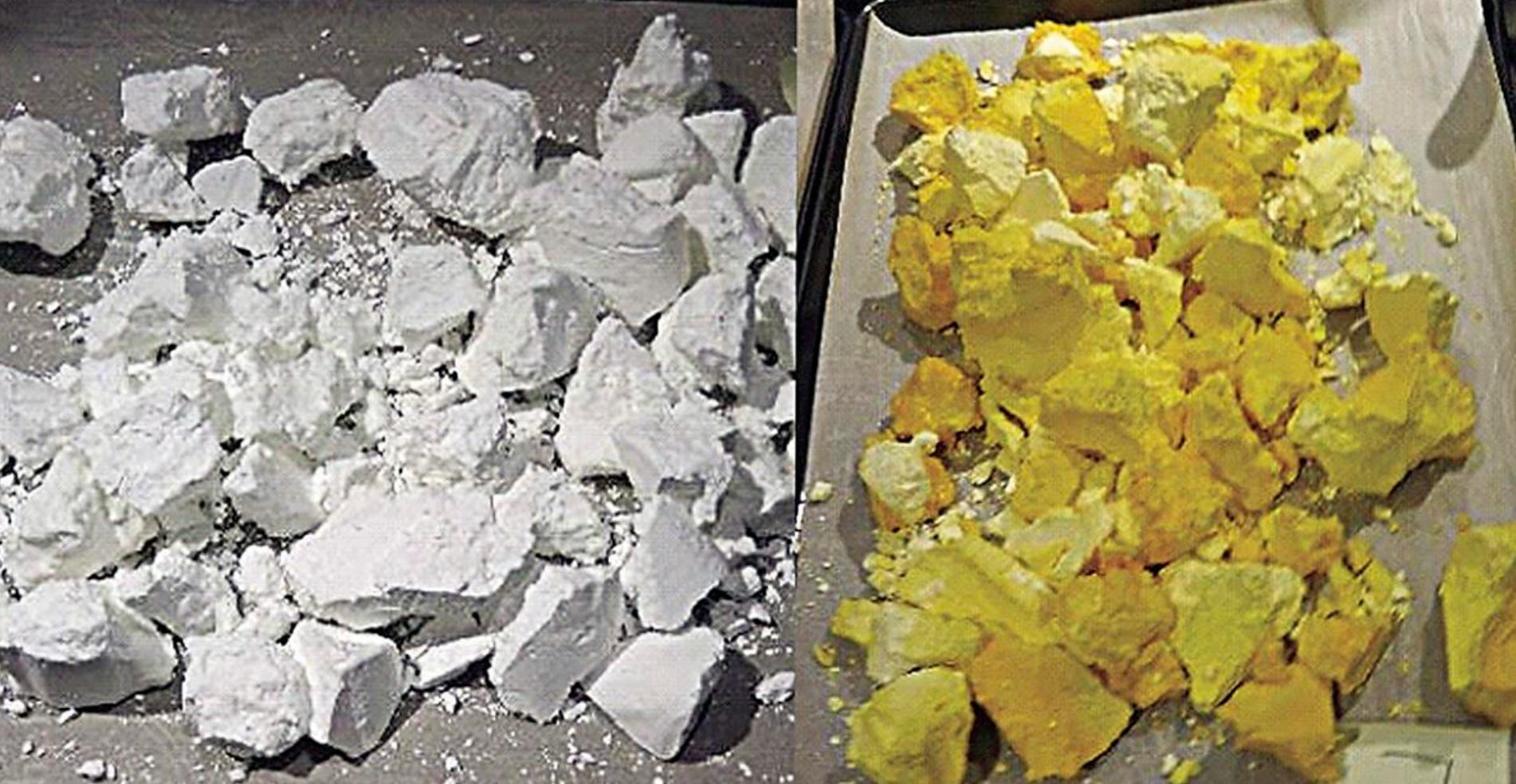
This one’s about carfentanil — gasp! — a hundred times stronger than even fentanyl. (I’d like to point out that both drugs are pharmaceutical-grade when doctors, nurses and veterinarians use them.)
A man was prosecuted for trafficking 26.5 kg of the stuff. So… if it’s 100X stronger than fentanyl, then technically this is like… forget it. With carfentanil the calculation falls apart because a) there’s no way its strength behaves this way in practice, because people use it all the time and b) it’s often in circulation in the fentanyl supply, probably as a backstop to fentanyl busts. Let’s stop worrying about the false logics of prohibition and spend our time fighting it instead.
3. A drug distribution network from BC to Ontario
On November 14, 2019, a few short months before border closures conspired to drive up drug toxicity deaths across the continent, fourteen agencies including the US DEA and Calgary Police collaborated on a bust including 27.3 kg fentanyl and other drugs.
The bust itself was worth about $20 million in assets, but with 14 agencies likely spending millions on Project Coyote and almost 5,500 people’s drug supply disrupted for a month, we can only assume the policing and health care price tags were considerably higher.
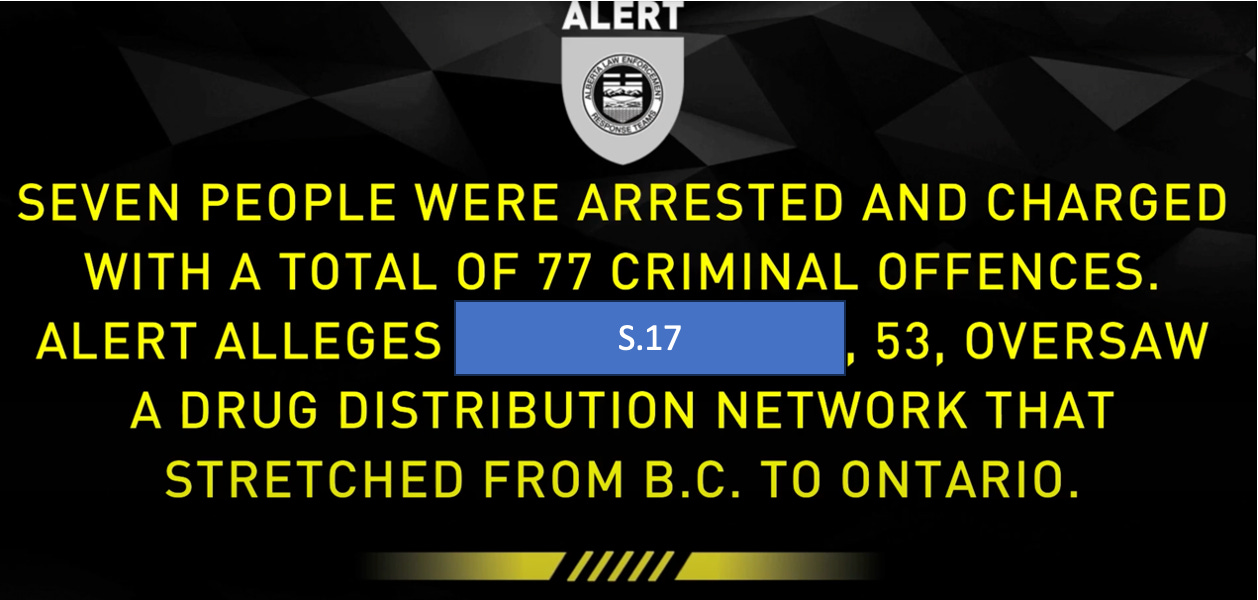
This bust was also the first I found to describe a BC-to-Ontario drug distribution network. Opioid poisoning deaths were dropping quickly in 2019 but have shot up rapidly since in all provinces from BC to Ontario (see the graph in the top section), which begs the question: does coordinated drug trafficking enforcement across these provinces drive their manyfold-higher death rates?
2. “Heinous activities that have an imminent risk of causing loss of life”
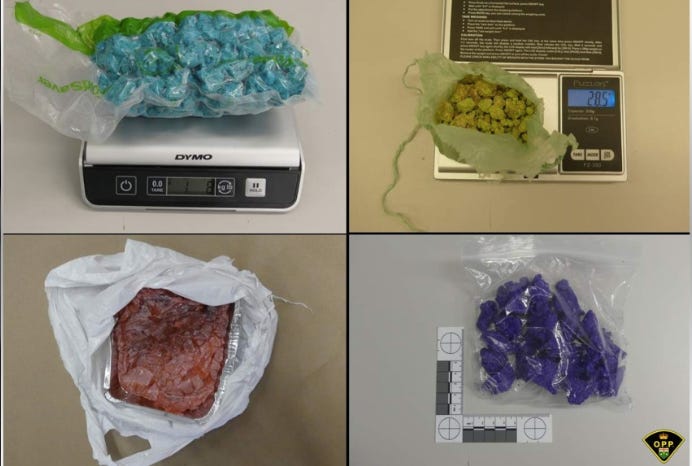
The Ontario Provincial Police described their own enforcement activities in this press conference quote that followed a 31.5 kg fentanyl bust across four locations in Ottawa, Cornwall and Mississauga on Remembrance Day, 2021.
The impacts of disrupting over 6,000 people’s fentanyl supply for a full month no doubt showed up in the emergency rooms across Southern Ontario and perhaps beyond, given the statement from Project Coyote (#4).
1. Largest opioid seizure as COVID summer hits
The largest seizure I was able to find occurred at a Burlington production lab on June 18, 2020, totalling 83 kg of fentanyl including powder and pills. The powder was apparently in primarily pure form as a large supply of cutting agents was also found alongside the fentanyl and a commercial mixer.
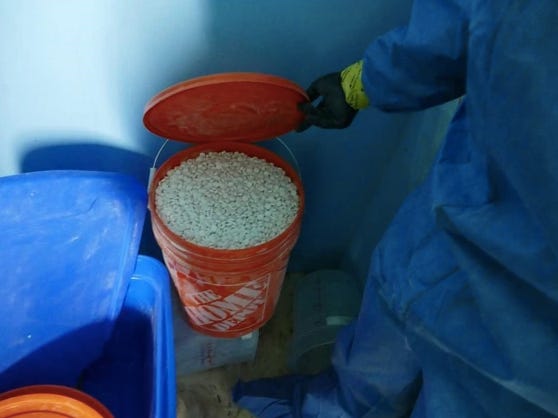
The Ontario Provincial Police worked their death magic alongside municipal police forces from Durham, Peel, Toronto, York and Halton.
In their statement, the police revealed that the distribution network “spanned across the country, with pills being destined for British Columbia from Ontario.”
This means that like the networks described above in #3 and #10, the fallout of this bust likely stretched into multiple provinces. In this case, we can estimate that approximately 16,600 people would be placed at excess risk of poisoning, hospitalization or death for a month.
Canada’s little secret
If there can possibly be a punchline to this rap sheet of death and political gaslighting, it has to be this:
Canada is a fentanyl exporter. Yup: we’ve got enough right here at home to ship as far as Melbourne, where in 2021 the largest-yet Australian fentanyl bust was shipped from Vancouver. Could it have been an international shipment produced in our favourite scapegoats, China and Mexico, then routed through Canada?
Not likely — why would anyone risk two border crossings? Meanwhile, the stories above detail domestic production capacity in BC, Alberta and Ontario more than capable of supplying Canada’s million or so people who use illegal opioids, and then some.
We need to move past prohibition — completely. For media, that means stop reporting police drug busts as benefiting the community, and start thinking critically about how they impact people on the ground trying to survive the unregulated drug market.
When a bust is being reported, maybe stop to interview a local person who uses drugs about what it might mean for their access to trusted supply. On outreach, we often hear from unhoused folks about costs spiking after a bust. These are people without housing or food security now forced to scrounge pennies to cover inflation driven entirely by law enforcement.
If law enforcement isn’t fair, the media coverage isn’t either. It’s time to get the story straight.


